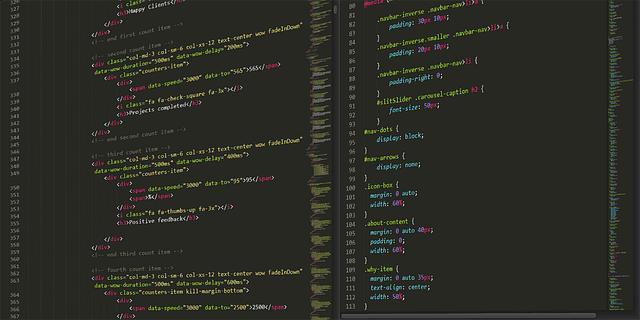The power of web development technology has been growing drastically over the past few years. Many developers are now using React.js as an important part of their web development toolkit. But the question remains – can React.js really be used to create large web applications? Is it suitable for enterprise-level applications? Will the performance of a React.js application be sufficient? Are there any limitations that developers should know about when using the framework?
Building a successful application is not just about the technology that it is written in. It requires a thorough understanding of the architecture, secure and scalable design, optimized performance and many other factors. Thus, it is no surprise that large companies often require their applications to meet certain standards. On the other hand, enterprise-level applications must be compliant with the company’s policies and frameworks. This leads us to the burning question – can React.js be used to create large scale web applications that meet the company’s specific requirements?
In order to answer this question, let’s look into some of the advantages and disadvantages of using React.js for enterprise-level applications. First of all, it is an open source JavaScript library which has been widely used in the development community over the past few years. It is also particularly suited for creating interactive user interfaces as it makes use of a virtual DOM. This allows it to be easily incorporated into other frameworks, such as Angular or Meteor, making it a great choice for integrating into existing systems.
In this article, you will learn more about the main benefits and drawbacks of using React.js for enterprise-level applications. This includes discussing the scalability and performance of React.js, the potential limitations that may arise due to the usage of framework, and finally, looking at some of the best practices for a successful React.js implementation.
Definitions of React.js and Its Application for Large Projects
React.js is a JavaScript library used for developing user interfaces (UI). React is the most popular JavaScript library developed by Facebook and is widely used for creating interactive UIs. It allows developers to create websites, applications, and user interfaces quickly and easily. React’s components-based structure makes it easy to manage and handle complex projects. By breaking a project into individual components, it is easier for developers to maintain, update, and modify the project.
React.js is popularly used for developing large applications, as it allows for greater scalability and comes with features like component reusability and efficient code production. It also offers the benefit of low maintenance cost and the ability to optimize code performance. Other advantages include its flexibility; it works well with a variety of programming languages, frameworks, and databases.
The React JavaScript library provides developers with an array of tools and features, which includes the following:
- Virtual DOM – It allows developers to create a lightweight, interactive, and performant application with minimal coding.
- Single-Way data flow – React helps to optimize the data flow with its one-way data binding. This means that data is passed through the components as one-way, and this flow remains consistent and reliable.
- JSX Syntax – React uses the popular JavaScript syntax extension (JSX) that makes it easier to read and write code for complex applications.
- Component-Based Architecture – React is built using a component-based architecture and makes it easier to manage and maintain complex projects.
Overall, React.js can be used to build large applications with greater scalability and lower maintenance costs. The component-based architecture and the tools provided with the React JavaScript library help developers create interactive and performant applications with minimal coding.
What makes React an ideal tool to build large applications?
What Makes React an Ideal Tool to Build Large Applications?
In the world of web development, React.js has quickly risen to prominence with its powerful features and simple API, which makes it a great choice for creating large applications. React simplifies the development process by creating components which can be easily re-used and modified, allowing developers to focus less on mundane tasks and more on creating a unique and effective user experience.
Easy To Learn and Use
One of the greatest advantages of React.js is its ease of use. React is an open-source JavaScript library, meaning it can be quickly picked up by even novice coders. The syntax used ensures consistency across applications, and developers can create custom components easily, something which is essential for larger projects. Additionally, it makes use of an in-depth virtual DOM, which allows elements on the page to be re-rendered when changes are made.
High Performance
Because React utilizes a component-based approach, the code is not only reusable but also optimized and more performant than other frameworks. This is clearly visible when creating large applications because the code is split into more manageable chunks. It also means that the ability to load multiple components separately into the page can improve loading times. Moreover, the virtual DOM ensures updates are made quickly, often without needing a full page reload.
Support For State Management
State management and data handling is a crucial part of any large React application. Fortunately, the framework comes with support for various tools, allowing developers to manage the state of large applications with ease. Tools like Flux and Redux impart a unidirectional data flow to applications, making it easier to manage how data flows throughout the application.
React also offers an array of helpful debugging tools which can help developers quickly identify and fix any issues. The React Developer Tools is a comprehensive suite of Chrome extensions which provide a way to inspect and debug React components in the browser. This removes a lot of the guesswork for larger applications, as developers can quickly locate and fix any errors or issues quickly.
- React is easily learnt and used
- High performance code
- Excellent support for state management
- Various helpful debugging tools available
Overall, React is an excellent choice for developing large applications as it provides many of the features needed to accelerate and simplify the process. This coupled with the reusable components, debugging tools, and support for popular state management tools makes it an ideal choice for big projects.
Understanding the key features of React
Understanding the key features of React
Reusable Components
React is designed in components, meaning individual parts of the application that are completely independent from each other. These components are small pieces of code that are written once and can then be used multiple times with just a single command. Components can get input data through props, which allows them to be reused in multiple ways and to stay functional regardless in which context they are used. This concept of reusing components provides a simple and effective solution of making large applications.
The Virtual DOM
One of the advantages of React.js for making large applications is the reduced rendering time. The Virtual DOM (Document Object Model) is an in-memory representation of the actual DOM and when changes are made, instead of rendering the entire document, it only renders the parts that have changed. This greatly improves the speed of the application as only the minimal number of components have to be re-rendered.
Unidirectional Data Flow
The way React.js handles data flow consists of one-way data binding. This means that data can only be passed from the parent component to the child component, but not from the child to the parent. This process is known as unidirectional data flow and is one of the core features of React.js. This prevents the application from becoming too complicated and ensures that any and all changes are done with accuracy.
JSX Syntax
JSX is the syntax used by React developers to write their code. It stands for JavaScript XML, and is used to create templates for the application that can be used to dynamically render data. This allows developers to easily create complex applications without having to write a lot of code, as it allows developers to create components that can be reused for different purposes. Additionally, developers don’t have to spend a lot of time debugging the code they write in JSX.
The Benefits of using React for large applications
ReactJS is an open-source JavaScript library for building user interfaces. It is used to create fast, reactive, and reusable UI components. It is popularly used to create single-page applications, complex applications, and mobile applications. React.js provides developers with a powerful way of creating UIs that can easily be updated or re-used across various projects. Many developers have begun to use React.js to create large, feature-rich applications.
Reduce Code Redundancy
React.js can help developers reduce code redundancy when creating large applications. By leveraging React’s componentized approach, developers can avoid unnecessary repetition. Components can be broken down into smaller pieces and reimplemented when needed. This allows for greater flexibility in the codebase and keeps the application maintainable and extensible. Additionally, code organization is simplified and bugs can be more easily tracked.
Component Reusability
One of the most appealing aspects of React.js is the ability to easily reuse components across projects. By utilizing the component-based approach of React.js developers can significantly speed up their development cycle. This is very useful when creating large applications as it saves both time and money by not having to reinvent the wheel. Components can be reused and implemented in different applications to reduce development time and increase the efficiency of the development process.
High Performance
React.js is well-known for its performance benefits. With React.js developers can create highly optimized applications with fast loading times. By leveraging the virtual DOM, React.js is able to quickly update only the parts of the UI that need to be changed. This makes it great for large applications as it can quickly respond to user input and actions. React.js also supports the use of server-side rendering, which can further improve the performance of the application.
In conclusion, React.js can be used to create large applications. It offers several benefits such as a reduction in code redundancy, component reusability, and high performance. By utilizing these benefits developers can create maintainable and extensible applications with fast loading speeds.
Conclusion
Is it possible to build a complex application with React.js?
The answer is yes – React.js is a powerful library that can be used to build sophisticated applications, from simple single-page sites to complex multi-page applications with dynamic content. With a clear structure, a vibrant community, and an ever-growing list of modules and features, React.js is one of the more reliable tools for creating powerful software.
As the technology evolves, new possibilities are always arising, from creating interactive user interfaces to using real-time data in your application. It can be easy to stay on top of the latest developments, so it is worth following a blog to keep up with the latest news and releases.
Frequently Asked Questions:
Q: What kind of applications can be built with React.js?
A: React.js is an excellent framework for building any kind of web application, from simple single page sites to complex multi-page applications with dynamic content. With a vibrant community and ever-growing list of modules and features, React.js is an incredibly powerful and popular tool.
Q: Is React.js suitable for creating mobile applications?
A: Yes, React.js is suitable for creating mobile applications, either through the use of React Native, or by using a platform such as Cordova to deploy a web app on a mobile device.
Q: Is React.js easy to learn?
A: React.js has a gentler learning curve than some other JavaScript frameworks, as it is component-based and follows a declarative programming style. With some basic JavaScript and HTML knowledge, you should be able to start building in React fairly quickly.
Q: Are there any alternatives to React.js?
A: There are several alternative frameworks, including Angular.js, Vue.js, and Ember.js, all of which offer powerful features and capabilities. Ultimately the best framework for you will depend on your specific needs and project requirements.
Q: Is there a React.js community for support?
A: Yes, there is a thriving community surrounding the React.js library. From forums to Slack channels and meetups, you will find all the help and support you need to build great projects with React.js.




